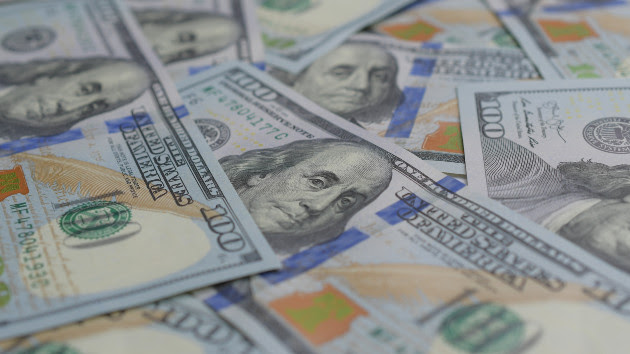(NEW YORK) — Mortgage rates stand at their highest level in more than two decades. The average rate for credit card holders tops anything on record at the Federal Reserve. Car loans have returned to 2008 levels, car research group Edmunds found.
Pain-inducing interest rates for just about any loan, experts said, trace to an underlying trend: Rapidly rising U.S. government bond yields.
The yield on a 10-year Treasury bond, or the amount paid to a bondholder annually, stands at about 4.6%, marking nearly a percentage-point jump since June.
“Everything is built up from the Treasury bond yields,” Marti Subrahmanyam, a professor of finance and business at New York University, told ABC News.
Here’s what to know about rising bond yields and what they mean for the finances of average Americans:
Why have bond yields risen so rapidly?
Soaring U.S. government bond yields stem from elevated inflation and the Fed’s ongoing effort to fight it, experts told ABC News.
Since last year, the Fed has put forward an aggressive series of interest rate hikes as it tries to slash price increases by slowing the economy and choking off demand.
A rise in the Fed’s benchmark interest rate closely tracks with increases in short-term Treasury bond yields, which in turn influence yields for long-term Treasury bonds, such as the 10-year Treasury, Jim Bianco, a market analyst at Bianco Research, told ABC News.
“When the Fed raises its rates, other rates move up,” Bianco said.
However, the rate hikes at the Fed — which stretch back to last March — fail to account for the meteoric rise of Treasury bond yields in recent months.
The recent jump in bond yields owes in large part to an acknowledgement among traders that the inflation fight has proven difficult and could force the Fed to keep its benchmark rate elevated for longer than expected, experts said.
Inflation stands well below its peak last year of over 9% but remains more than a percentage point higher than the Federal Reserve’s target rate.
“This more aggressive move in bond yields has coincided with a realization and grudging acceptance that the Fed is going to be keeping interest rates higher for longer and won’t be cutting them anytime soon,” Edward Marrinan, a credit analyst at SMBC Nikko Securities America, told ABC News.
What do high bond yields mean for personal finances?
High bond yields have made borrowing much more expensive for U.S. consumers.
The onset of this financial pain is exemplified by the housing market, where the average interest rate for a 30-year fixed mortgage is about 7.5%, Freddie Mac data shows.
When the Fed initiated the rise of bond yields with its first rate hike of the current series in March 2022, the average 30-year fixed mortgage stood at just 4.45%.
Each percentage point increase in a mortgage rate can add thousands or tens of thousands in additional costs each year, depending on the price of the house, according to Rocket Mortgage.
MORE: Interest rates are at a 22-year high. Here’s what that means for your finances.
“For most people, the biggest loan that they need to take out is a mortgage,” Bianco said. “Mortgage rates are going up and monthly payments are becoming more expensive.”
That holds true for borrowing rates tied to a wide range of other loans, including those for higher education, cars and credit cards, among others.
The impact of bond yields for consumers isn’t entirely negative, however. The trend has increased returns for investors who place their money in financial instruments such as money market funds or high-interest savings accounts, which are typically safer investments than the stock market.
“A lot of people are very happy that they can get a yield again,” Bianco said.
Copyright © 2023, ABC Audio. All rights reserved.












